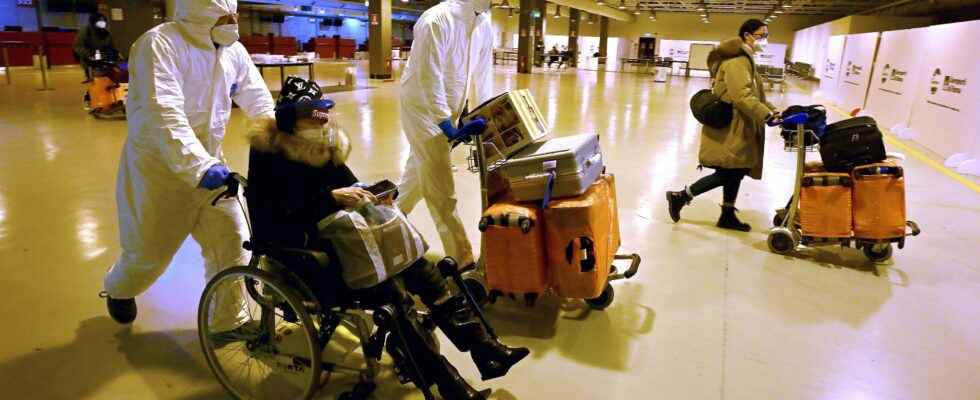“Since the outbreak of the epidemic, China has been sharing reliable information and data with the international community, including the WHO, in an open and transparent way.” Faced with the growing concern of the international community, the spokesperson for the Chinese Ministry of Foreign Affairs, Wang Wenbin, was forced to defend, this Friday, December 30, the abnormally low figures communicated on the epidemic in his country. . The day before, only 5,515 new cases of Covid and one death were announced by the Chinese Center for Disease Control and Prevention (CDC), while the epidemic is in full swing in the territory according to numerous testimonies from doctors and residents in the press and on social networks. Several crematoriums interviewed by AFP recently reported an unusually high influx of bodies to be cremated. A situation largely ignored by the Chinese media, but which the authorities are beginning to mention.
According to experts from the British center Airfinity, the death toll in China could stand at 9,000 per day currently, and reach 1.7 million by the end of April 2023. The number of cumulative deaths in China since on Dec. 1 likely hit 100,000, with the number of infections rising to 18.6 million, Airfinity said in a statement on Thursday. To find those numbers, the agency used modeling based on data from Chinese provinces before the recent changes in case reporting were implemented, she said. It thus predicts a peak in infections on January 13, with 3.7 million cases per day. Researchers from the University of Hong Kong expect one to two million deaths from Covid-19 in mainland China in 2023.
Fewer tests, always more opacity
How to explain such a difference with the official Chinese figures? In addition to the stranglehold of the party-state on the country’s health system, generalized screening has no longer been compulsory since the abrupt end of the zero Covid policy, decided at the beginning of December. The national network of PCR testing sites has therefore been largely dismantled, as authorities have moved from preventing infections to treating them.
In addition, the latter have recently decided to change the methodology for counting deaths from the virus. Only people who died directly from respiratory failure linked to Covid-19 are now counted in the statistics, contrary to the international standard which counts as death from Covid any person who died with the virus.
Faced with the resurgence of the epidemic on Chinese territory, many countries have expressed their concern, calling on China to be more transparent with the international scientific community. “We don’t know what variants are currently circulating there, and whether these variants have a different response to vaccination” than those we know, worries nearby Guardian Australian infectious disease professor Dominic Dwyer.
WHO calls for more transparency
WHO Director-General Dr Tedros Adhanom Ghebreyesus called on China to share its data and conduct relevant studies to help the world understand what Covid variants are circulating. “In order to carry out a full risk assessment of the situation on the ground, WHO needs more detailed information on the severity of the disease, hospital admissions and critical care support needs. “, he stressed during a briefing on December 21, according to the Guardian.
From January 8, Chinese citizens will once again be able to apply for a passport to travel abroad, and mandatory quarantines for arrivals will be lifted upon presentation of a negative PCR. Neighboring Japan, India, but also the United States, Italy and Spain reacted quickly to this announcement by imposing a PCR test on the arrival of Chinese tourists on their territory. The US is even considering taking sewage samples from international planes to check for any new variants of the virus.
